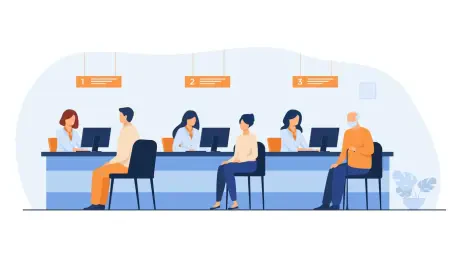In the face of socio-economic change, Summit County, located in northeast Ohio and hosting nearly 540,000 residents, has embarked on a transformative journey to enhance public benefits transition. With over 76,000 individuals involved in the Supplemental Nutrition Assistance Program (SNAP) and around 108,500 receiving Medicaid assistance, the county identified a critical need to address the challenges posed by the “benefits cliff.” This term refers to the transitional phase when individuals earn more and consequently lose eligibility for public assistance, presenting a challenge to achieving self-sufficiency. To tackle this issue, the Department of Jobs and Family Services (DJFS) introduced the NEXT program in collaboration with technology provider Unite Us, aiming to bridge the gap and support individuals as they transition towards self-reliance.
Current State and Initiative Overview
Summit County’s initiative is a vital response to the disruptions caused by the benefits cliff, which adversely affected many residents. The NEXT program is designed to provide holistic support, offering services like job coaching, financial planning, and rental assistance. Financial incentives further encourage and reward participants’ progress. Initially, these efforts were marred by inefficiencies and obstacles in managing individual cases, leading to delayed assistance. In August 2023, DJFS adopted a centralized software platform offered by Unite Us to streamline community-based services and referral processes, enhancing the effectiveness of the transition initiative.
Technological Impact and Efficiency
The integration of a centralized technological platform has led to remarkable improvements in operational efficiency. NEXT workers have saved significant administrative hours, experiencing efficiency gains in their workflows and benefiting from improved communication across participating organizations. Real-time monitoring capabilities now enable enhanced tracking of cases and client interactions. The streamlined process allows social service staff to offer better support, leading to improved client experiences and outcomes while also significantly reducing the burden on staff time and cost.
Addressing Challenges and Providing Solutions
Initially, the social service system faced challenges resulting in inefficiency and a high staff workload. Leveraging centralized technology has successfully overcome these hurdles, reduced the administrative burden, and improved staff morale. This shift has been critical for the sustainability of the program and the overall well-being of employees who can now focus on delivering timely and necessary aid to clients.
Regulatory and Compliance Framework
The role of regulatory and compliance considerations is central to the operation of Summit County’s public service delivery. Ensuring transparent and accountable utilization of taxpayer money has been paramount. The platform’s design allows for comprehensive tracking and monitoring of service delivery, ensuring providers comply with regulatory standards. This enhances public trust, as there is greater visibility into how taxpayer money is used to support vulnerable populations.
Future Prospects and Innovations
Looking ahead, the potential for further technological advancements in the public benefits sector is promising. The platform is anticipated to generate substantial economic savings for taxpayers over three years, alongside additional tax revenue as participants engage actively in the economy. These advancements offer hope for empowering self-reliance and increased economic engagement among beneficiaries. By reducing errors and leveraging data insights for strategic decision-making, the program continuously refines service delivery for optimal impact.
Overall, the transformation in Summit County exemplifies the power of technology in socio-economic change. By establishing more efficient processes and fostering better client interactions, this initiative serves as both a model of success and a roadmap for future innovations in public benefits transition.









